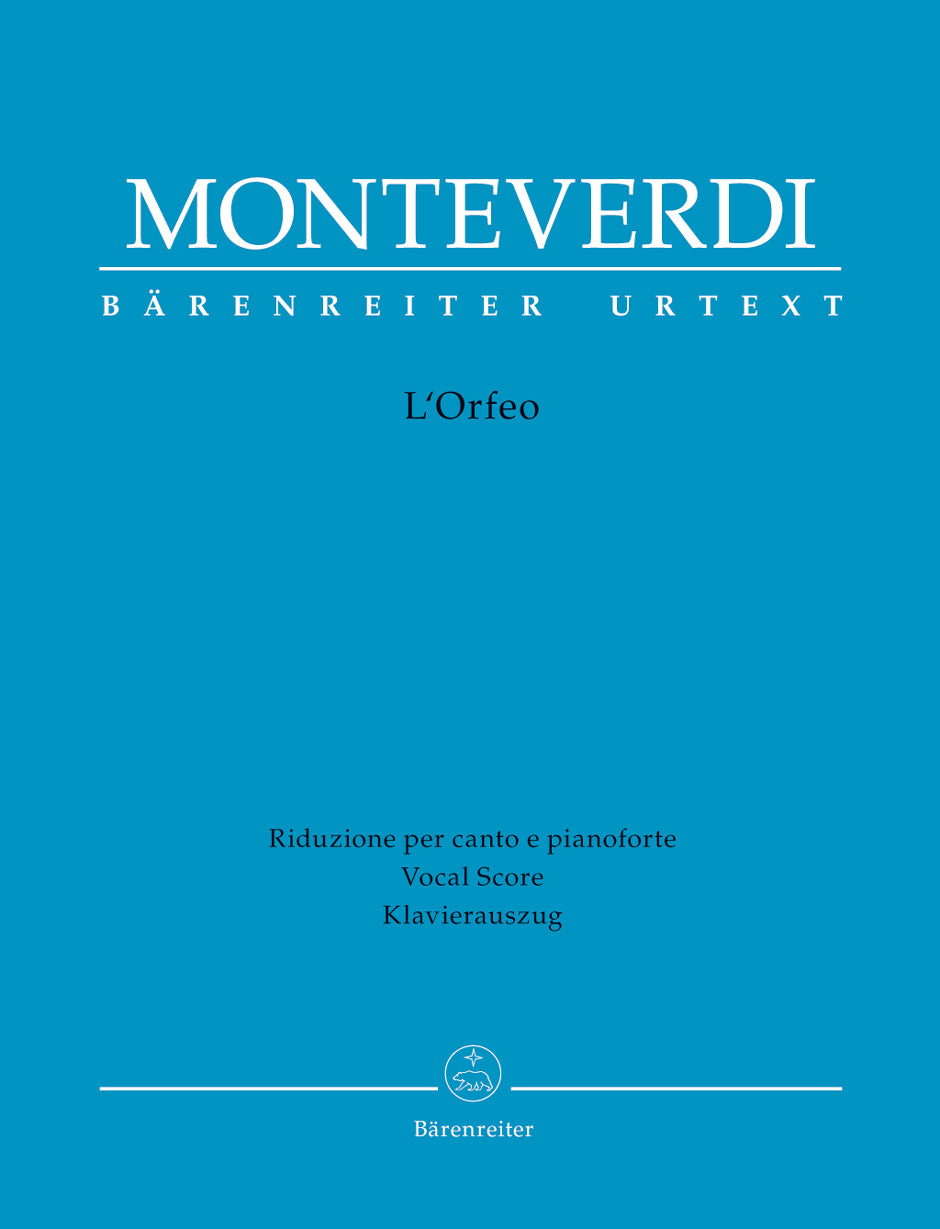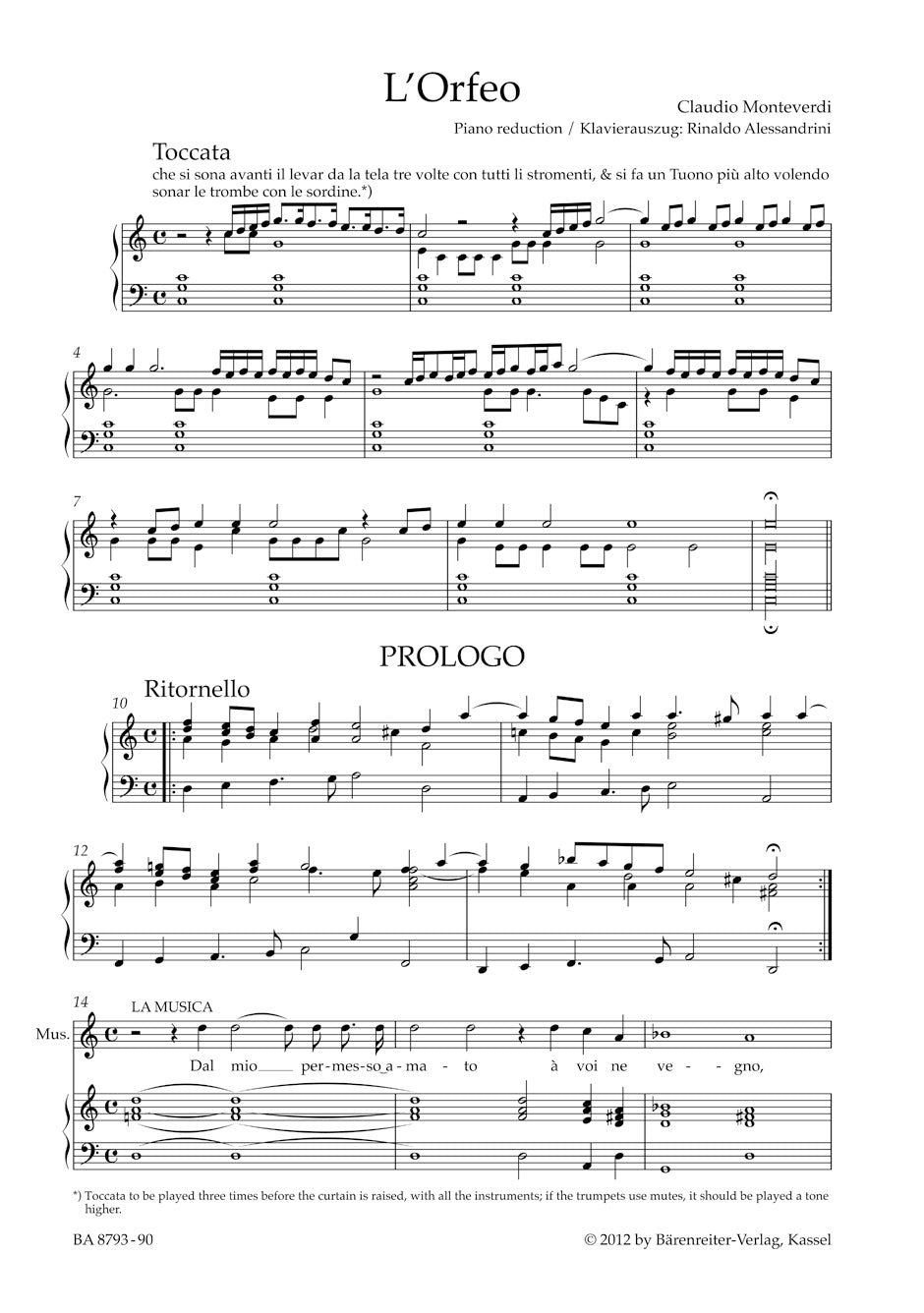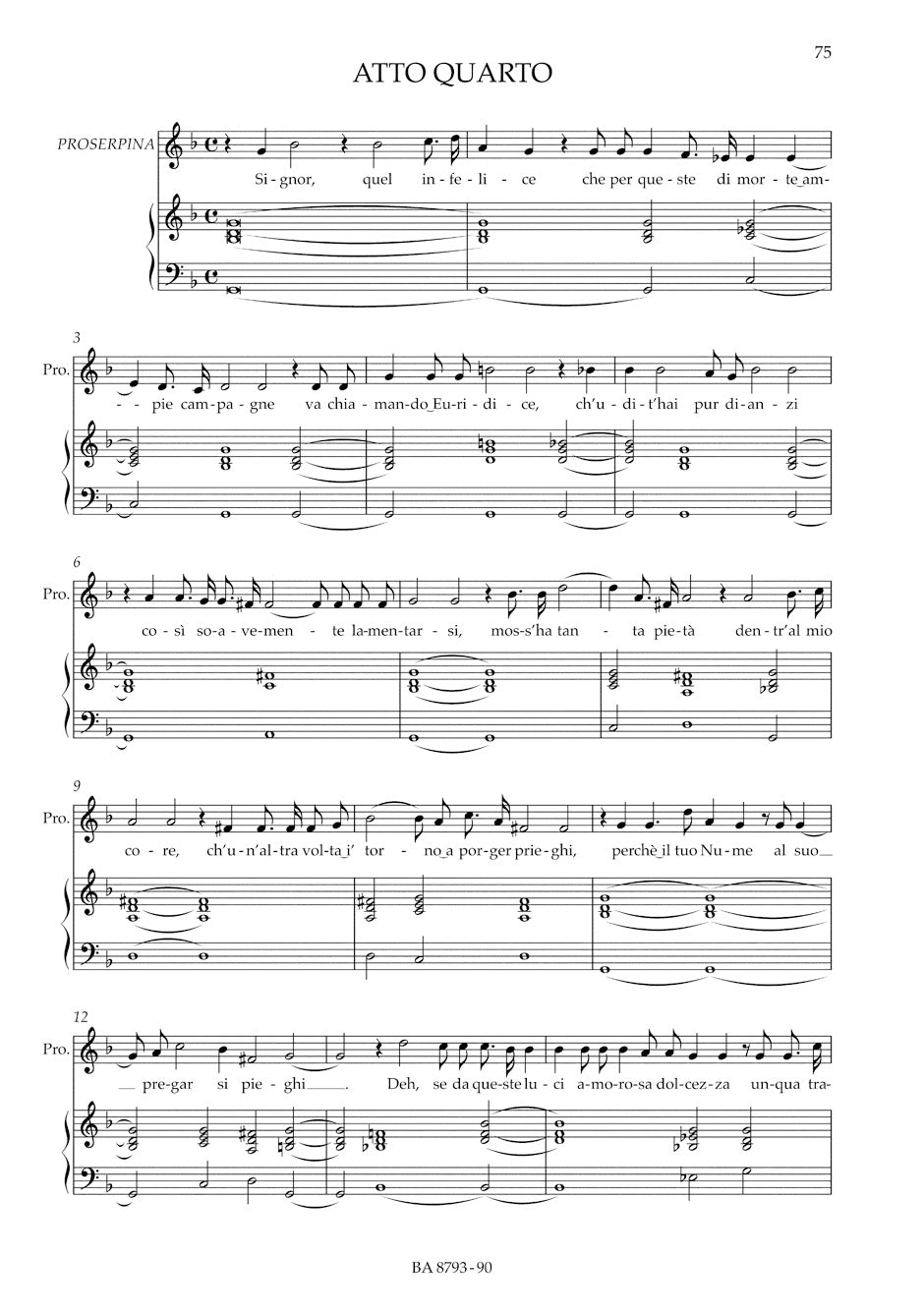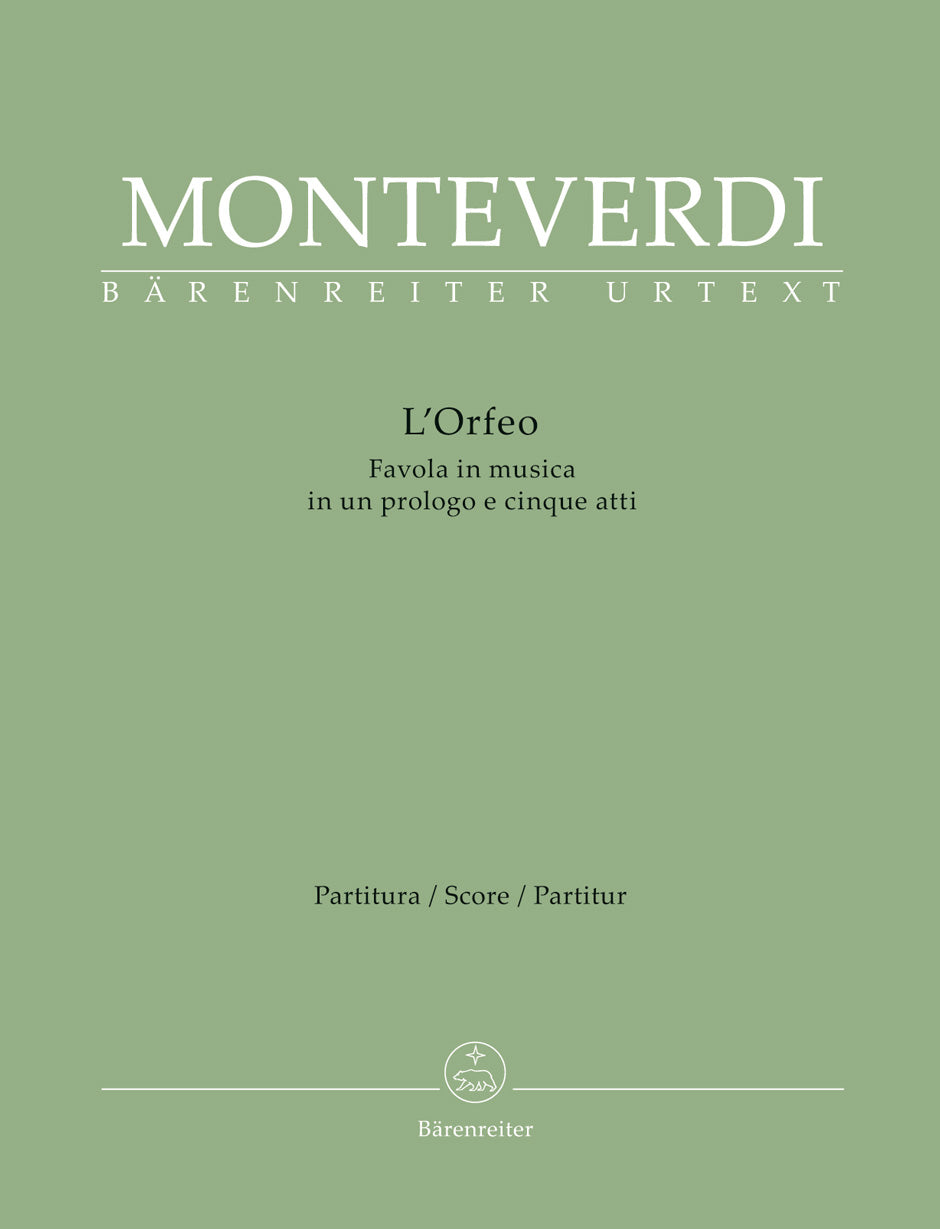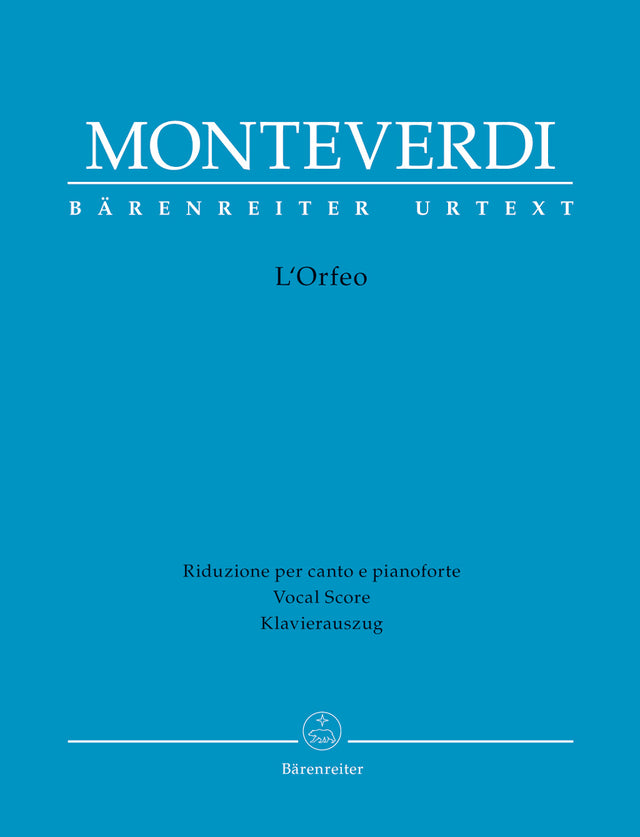Monteverdi: L'Orfeo
Favola in musica in one prologue and five acts
In stock and typically ships within 1 business day.
- Composer: Claudio Monteverdi (1567-1643)
- Editor: Rinaldo Alessandrini
- Instrumentation: Opera
- Work: L'Orfeo, SV 318
- Work Language: Italian
- ISMN:
- Size: 7.5 x 10.6 inches
- Pages: 143
- Urtext / Critical Edition
Description
Monteverdi's opera "L'Orfeo", based on the legend of Thracian singer Orpheus and his love of Eurydice, is a masterpiece of musical declamation and ornamentation. It was first performed during the 1607 carnevale in the "Palazzo Ducale" in Mantua.
When an edition remains true to its sources, this certainly does not mean that it is not also practical to use, as is demonstrated in this Bärenreiter edition of Monteverdi's "L'Orfeo". Edited by Rinaldo Alessandrini, the new publication follows the Bärenreiter edition of Monteverdi's "Il ritorno d'Ulisse in patria".
Two contemporary prints of "L'Orfeo" from the years 1609 and 1615 have been passed down to us. Four copies of each of these prints still survive today in public libraries. The later print includes many corrections to the earlier edition and was accordingly used as the primary source for this Bärenreiter edition. However, when solving musical problems the editor frequently follows the more coherent style of the earlier print. The numerous interesting variants, not only between the two editions but also amongst the eight surviving copies, are listed in the critical commentary.
This edition of "L'Orfeo" offers in addition to Monteverdi's somewhat sparse original figures also figures added to the bass line by the editor. The continuo player should, however, feel free to follow his own judgment. The notation has been, when necessary, adapted to suit modern practice, for example with regard to the clefs. The sections that were originally written in "chiavetta" have been transposed a fifth lower. in the appendix these sections also appear in their original notation in facsimile as well as transposed a fourth lower.
Publishers use a lot of words to describe what they sell, and we know it can be confusing. We've tried to be as clear as possible to make sure you get exactly what you are looking for. Below are descriptions of the terms that we use to describe the various formats that music often comes in.
Choral Score
A score for vocalists that only contains the vocal lines. The instrumental parts are not there for reference. Generally, cheaper than a vocal score and requires multiple copies for purchase.
Facsimile
Reproductions of the original hand-written scores from the composer.
Full Score
For ensemble music, this indicates that the edition contains all parts on a single system (there are not separate parts for each player). In larger ensembles, this is for the conductor.
Hardcover
Hardbound. Generally either linen-covered or half-leather.
Orchestral Parts
Similar to a wind set, this is a collection of parts. In the case of strings, the numbers listed are the number of copies included, though generally these are available individually (often with minimum quantities required).
Paperback
When publishers offer multiple bindings (e.g. hardcover) or study scores, this is the "standard" version. If you're planning to play the music, this is probably what you want.
Performance / Playing Score
A score of the music containing all parts on one system, intended for players to share. There are not separate parts for each player.
Set of Parts
For ensemble music, this indicates that there are separate individual parts for each player.
Solo Part with Piano Reduction
For solo pieces with orchestra, this is a version that contains a piano reduction of the orchestra parts. For piano pieces, two copies are typically needed for performance.
Study Score
A small (think choral size) copy of the complete score meant for studying, and not playing. They make great add-ons when learning concertos and small chamber works.
Vocal Score
A score prepared for vocalists that includes the piano/organ part or a reduction of the instrumental parts.
Wind Set
For orchestral music, this is a collection of wind and percussion parts. The specific quantities of each instrument are notated.
With Audio
In addition to the printed music, the edition contains recordings of the pieces. This may be an included CD, or access to files on the internet.
With / Without Fingering (Markings)
Some publishers prepare two copies - a pure Urtext edition that includes no fingering (or bowing) suggestions and a lightly edited version that includes a minimal number of editorial markings.

